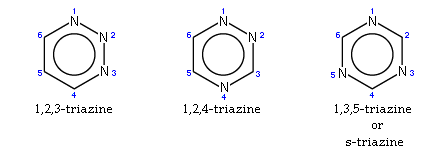Lewis structures that are equivalent except for the placement of electrons are called resonance structures or resonance forms and the hypothetical switching from one resonance structure to another through electron delocalization is called resonance. By convention, resonance structures are separated by double headed arrows.

Seen above are the resonance structures of the ozone molecule. Notice that the only difference between the two structures is in the placement of the double bond and the placement of the lone pair.
Resonance structures are possible whenever there is a multiple bond and an adjacent atom with at least one lone pair. For example, the two resonance structures for the formate ion, HCO2- are
As represented by the arrows, in order to generate the second resonance structure from the first, one lone pair is turned into another bond, thus forming a double bond and consequently, this causes one bond to turn into a lone pair.
The general way of deriving resonance structures from one another is through shifting one of the lone pairs to and adjacent atom to form another bond and through shifting one of the bonds in a double or triple bond up to form a lone pair. This should not be applied to all cases though as the atoms' electronegativities should also be considered. For example, in fluoroethene, CH2CHF,
the resonance structure on the right is not reasonable as fluorine is the most electronegative element and in order to for it to form two bonds and two lone pairs, it would first have to lose an electron.
It is also possible to form resonance structures without the participation of lone pairs. An example is the benzene ring which involves a cycle of double bonds.
It should be taken into consideration that in drawing resonance structures, only the electrons may be moved. The nuclei of the atoms are fixed. The total charge and the total number of electrons are fixed as well.
With all the rules and all the other things to be considered, I find this lesson complicated. :c





